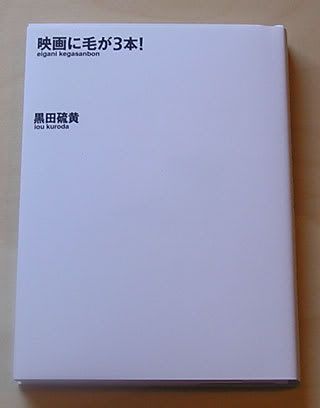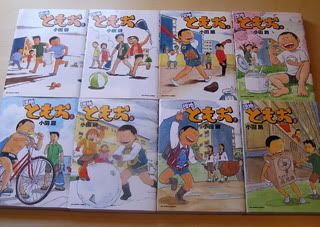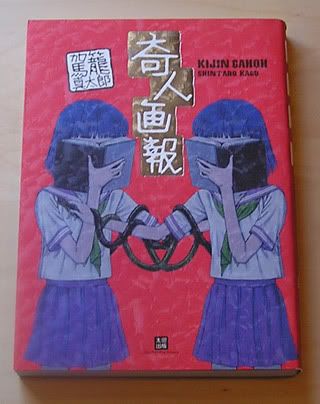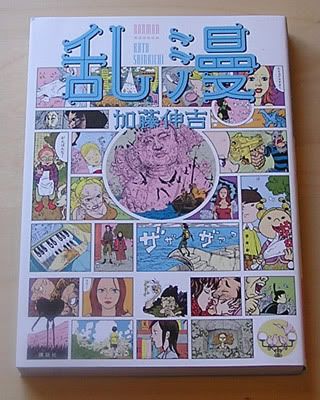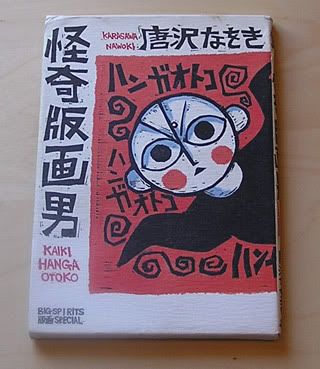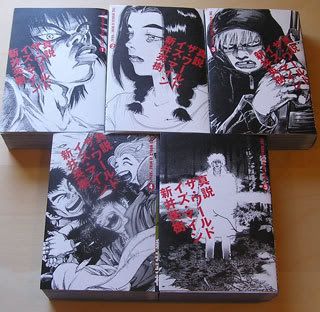 The World Is Mine
The World Is Mineby Hideki Arai
Published in Young Sunday (Shogakukan)
14 volumes (1997-2001)
5 volume reprint (2006) [Enterbrain]
Amazon.jpHideki Arai's end-of-the-century cult classic, for years out of print, was reissued last year in 5 massive bricks weighing in at over 600 pages each. A controversial masterpiece that defined an era in Young Sunday alongside
Koroshiya Ichi, this title has not achieved the worldwide infamy that its cousin has, for the lack of a movie adaptation (though the late Kinji Fukasaku was considering it before his death). However, it commanded an even higher rate of critical praise in comparison to its relative obscurity. Indeed, the catch copy advertisements wrapped around these books come with blaring accolades from beloved figures in contemporary Japanese entertainment: hip writers like Kotaro Isaka and Kazushige Abe, Shigeru Kishida of the rock band Quruli (who even named an album "The World Is Mine") and rap group Rip Slyme adorn TWIM with glowing quotes, a practice that does exist in Japanese publishing, but with nowhere near the frequency of North America. Even actor/director/writer Suzuki Matsuo and Evangelion director Hideaki Anno are counted as fans.
TWIM has alternately been described as the bible to a new millennium and an absolute disaster in the wrong hands. On the surface, it is a blindingly intense and violent action/suspense story about two criminals, the bestial, ferocious Mon and his partner Toshi, a malevolent bomb fanatic. As Toshi-mon (as they are called by the media) orchestrate a campaign of terror across Japan's mainland, they cross paths with the equally violent Higumadon, a creature that seems to resemble an enormous, dinosaur-sized bear. Toshi-mon continue to murder civilians and evade capture by the authorities, striking fear into the heart of the Japanese establishment and destabilizing the very society of their country. As the unexplainable phenomenon of Higumadon grows more and more connected to the unstoppable fugitives, the story begins to take on a religious tone to the psyche of the entire nation. When the series reaches its final story arc, the scope expands exponentially, blasting what began as a crime spree beyond the very history of mankind itself.
There are two great appeals to TWIM: the shockingly vivid violence and the extraordinarily-portrayed characters. The violence can be problematic, as mentioned above. When a truly intense action or emotional scene occurs in TWIM, there is really nothing else like it in the world of manga. Arai has no qualms about pushing the limit for what he will portray. In an extended interview broken up and printed throughout all 5 volumes, he describes his position toward violence as inspired by that of Beat Takeshi's gangster movies. Violence, he says, must not be portrayed as cool or stylish, lest it lose its potency. In order for it to be effective and have meaning, it has to
hurt. There are a multitude of simple shootings within the manga, but it is the close-quarters murders, such as when Toshi first takes a life by clumsily stabbing and slashing a young woman as she screams and wails, that are most haunting. As Toshi and Mon come to dominate the national attention, crass, disenchanted youths across Japan flock to them in hero-worship, a jeering mass of cultish followers. In a way, these are a representation of the TWIM readers who see and admire nothing but the endless depravity of the Toshi-mon killing spree. Arai wishes us to weigh the cruelty and immorality of his main duo, while challenging us with the sheer, arresting spectacle of their actions.
The other quality that Arai uses to great effect in TWIM is his characters. Nearly every character is impeccably developed, starting with the dichotomy of the two leads. Mon is a modern-day Mowgli, raised in the wild. He is rash, violent and base, yet also holds an innocent and serene softer side. He is Early Man and childhood. Toshi is a postal worker living a relatively normal life who finds an interest in the internet and explosives. He is cruel, vindictive, petty and cowardly, a Modern Man and the product of a filthy, unjust society. The heroine Maria is unsurprisingly a Mary figure full of empathy and compassion for others, who must balance her strong beliefs with her surging hatred for Toshi-mon's deeds when she is kidnapped and dragged along on their spree. Arai's secondary characters make up for the smaller screen time with vivid eccentricity: A lewd, cherubic prime minister of strong mind who does not play by the politician's book; a newspaper writer who constantly scribbles penises in his notebook as he follows his leads; a catatonic police commander with slack facial muscles, causing him to slobber and spit uncontrollably when he speaks; a wizened, wily bear hunter from Hokkaido who comes to the mainland to hunt down Higumadon and forms a fragile friendship with the newswriter.
Beyond the action and characters, TWIM also received recognition for the frequency and accuracy of the portrayal of regional Japanese dialects. Much of the story takes place on the north end of the main island of Honshu, in the prefectures of Aomori and Akita, northeast of Tokyo, and Arai took special care to recreate the accents and speech patterns of the local people, despite the fact that he himself was raised in the big city, where there
is no accent. This feeling of geography is very important to the manga, which uses an almost ludicrous amount of Godard-esque (or would that be Anno-esque?) subtitles, announcing the time and place at every scene change. In this way, the events of the story are given a strong documentary-like realism, a grounding that helps further reinforce the sheer scale of what is portrayed. It is often difficult to follow the dialogue, for a variety of reasons. The regional dialects of Aomori and Akita can be quite unfamiliar compared to standard Tokyo Japanese, and require an acclimation period before the patterns sink in. As well, Arai's voice as an author carries some peculiarities. In moments of quick action or extreme emotion, his characters will often break down from full sentences to choppy, blurted interjections. It's hard for me to tell if these are simply attributable to the idiosyncracy of the writer, or are perhaps a depiction of the slowing of time during sequences Arai wishes to emphasize (thus breaking the comic Golden Rule that you have all the time in the world to give your speech before the next panel advances the sequence). In addition to these more fundamental language issues, Arai also bogs down some of the pacing in the middle of the story with extended technical discussions about things like the military chain of command, political maneuvering and manipulating public perceptions, things that he himself admits he did not understand before drawing the manga, but were necessary to give it the serious portrayal his subject deserved.
The 5-volume reprint was also advertised as having many extra pages added by Arai to flesh out the story. For fun, I found scans of the original 14-volume run and compared them as I read. Ignoring the few niggling typos in the supposedly superior version, the additions to the story (mostly at the end of the last volume) are actually not quite as illuminating as you might expect. There is very little added content; Arai simply stretched out sections that were either cramped or lacked the impact he wanted, taking single expository paragraphs from the original and cutting them up to cover several panels and make the manga read easier.
All in all, The World Is Mine is as grandiose a statement as the title would suggest. It's at once a lurid spectacle, a thrilling adventure, a heady and difficult statement, and a take on some of the most basic questions of humanity and life. Highly recommended.
